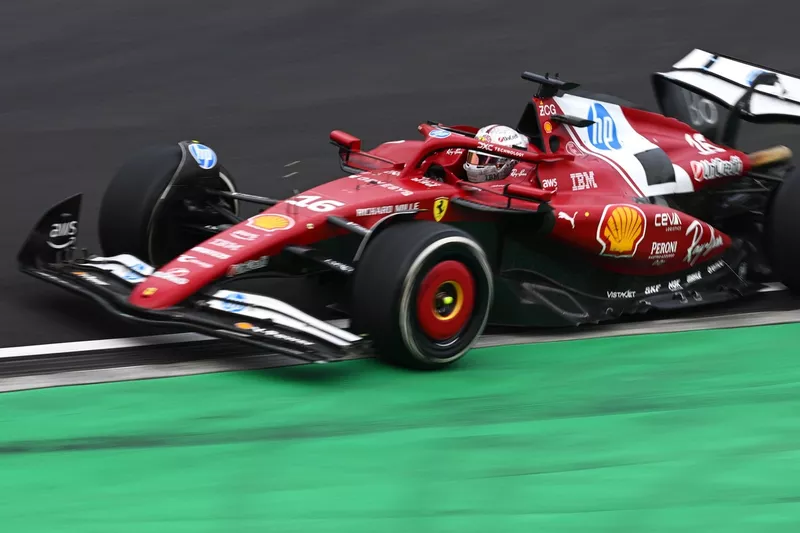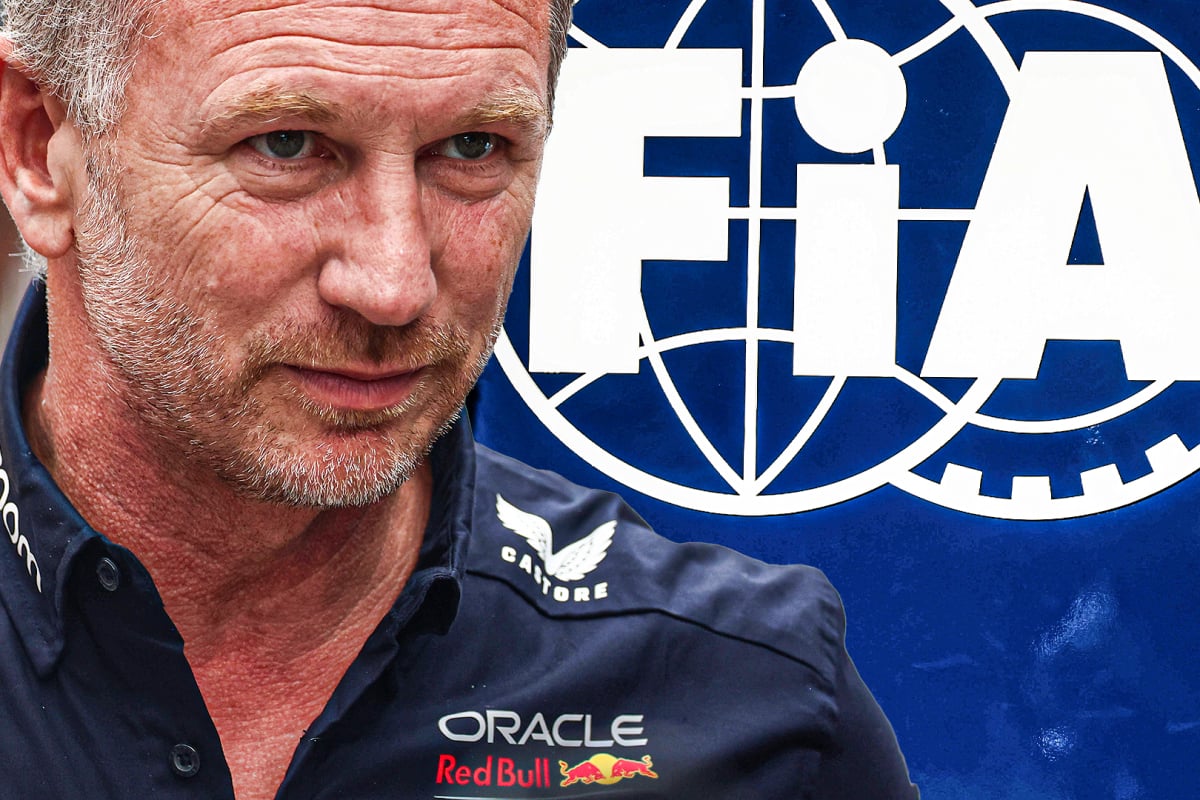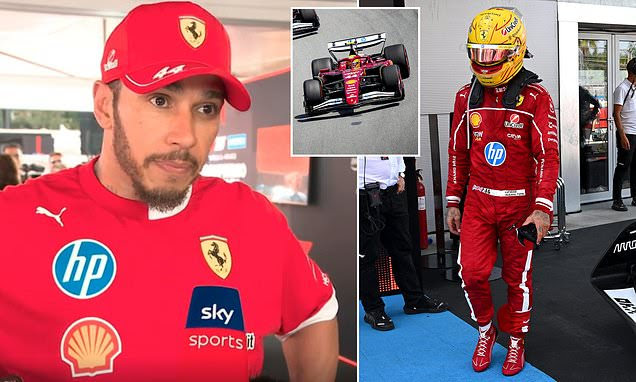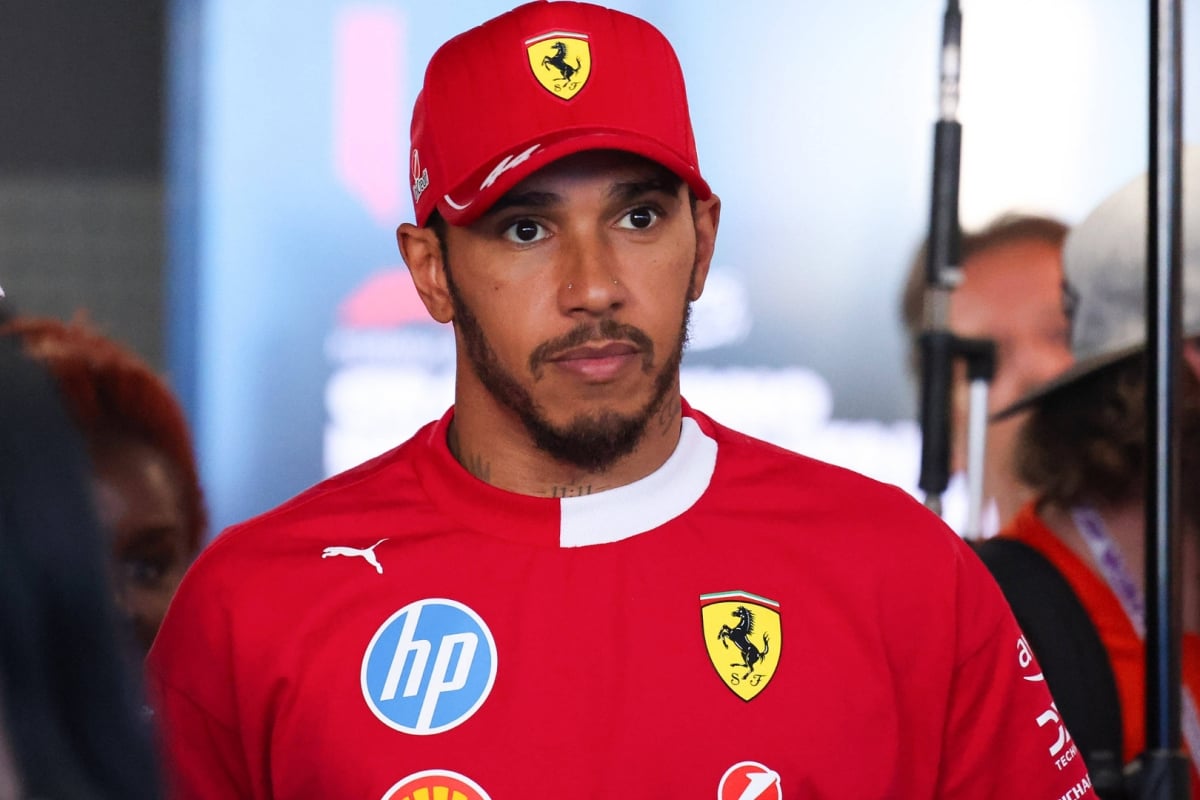Leclerc’s Decision to Keep Damaged Front Wing in Chinese GP: A Strategic Move to Preserve Track Po…read more
Charles Leclerc’s decision to continue racing with a broken front wing during the 2025 Chinese Grand Prix came down to a fear of losing track position. After a collision with Lewis Hamilton on the opening lap, which damaged the endplate of Leclerc’s front wing, Ferrari chose to keep the Monegasque driver out on track despite the loss of downforce. This decision proved to be a balancing act between preserving track position and managing the damage.
The Incident with Hamilton and the Impact on Leclerc’s Car
The incident occurred early in the race, as Hamilton attempted to take the inside line at Turn 3 on the first lap. As he tried to assume the apex position, the two cars made light contact, knocking off the endplate of Leclerc’s front wing. The damage cost Leclerc significant downforce, estimated at a loss of about 20-30 points, according to his race engineer, Bryan Bozzi. This downforce loss translated to a time loss of approximately 0.2-0.3 seconds per lap, which could have been detrimental over the course of the race.
However, Leclerc chose to stay out on track rather than pit for a new front wing. He felt confident that he could manage the impact of the damage on his car, especially since his pace was still strong. Ferrari was also facing the prospect of losing crucial track position if they opted for a pit stop, and Leclerc was determined to keep his position on track to avoid falling behind.
Strategic Move to Preserve Track Position
Leclerc’s pace remained strong despite the broken wing, prompting Ferrari to swap their two drivers. With Leclerc showing better pace compared to Hamilton, the team allowed him to overtake his teammate and attempt to chase down George Russell. Leclerc got within DRS range of Russell but ultimately faced a setback when he locked up at Turn 14, forcing him to abandon his attempt.
The decision to not change the front wing was partly driven by the fact that Leclerc feared losing more than just track position. A pit stop would cost around eight seconds, and after rejoining, Leclerc would have faced a difficult challenge in overtaking cars that were ahead of him, especially with his car’s diminished performance due to the damaged wing. Turn 12 in particular had proven to be a weak point for Ferrari, making overtaking difficult and leaving Leclerc vulnerable to attacks from cars behind.
“I didn’t want to take that risk,” Leclerc said after the race. “I just wanted to keep track position and try to maximize the result.” Despite the physical toll of racing with a damaged wing, Leclerc’s decision to stay out allowed him to retain his place and maximize the result despite the odds.
Challenges with Tire Degradation and the Effect on Performance
As the race progressed, the impact of the broken front wing began to take its toll on Leclerc’s tire performance. The degradation of his hard-compound front tires became more pronounced towards the end of the race, especially as the car’s aerodynamics were compromised by the missing endplate. This made it more difficult for him to maintain his position and ultimately cost him in his battle with Max Verstappen for fourth place.
Leclerc admitted that the broken wing made the car feel “really bad” but also acknowledged that Ferrari’s car was generally strong over the weekend, noting his strong pace during the sprint race as well. “I think we had a really good race car, and today I did a step with the car, and I think that made it a lot better for today,” he added. Despite the wing damage and tire struggles, Leclerc’s performance was still commendable, and his strategic decision to continue was seen as a smart move to salvage the best result possible.
Team Principal Vasseur’s View on Leclerc’s Performance
Fred Vasseur, Ferrari’s team principal, was impressed by Leclerc’s resilience and pace, even with the broken front wing. While acknowledging that the damage caused a loss of downforce, Vasseur praised Leclerc for his “mega” pace under difficult circumstances. “The pace was mega, and this is the positive of the weekend,” Vasseur said. He also noted that Leclerc’s final result, finishing just 20 seconds behind the McLaren, was still a strong showing considering the disadvantage caused by the damage.
However, Vasseur did recognize that the loss of downforce made it harder for Leclerc to manage tire wear towards the end of the race. Despite this, the team’s strategy to keep Leclerc out was ultimately justified, as he managed to finish in a respectable position and extract the maximum performance from his car.
In the end, Leclerc’s decision to soldier on with the broken wing, rather than pit for a new one, allowed him to avoid losing critical track position and gave Ferrari a solid result despite the setback. Though the strategy was not without its challenges, Leclerc’s ability to maintain competitive pace with the damaged wing was a testament to his skill and Ferrari’s overall performance during the weekend.




